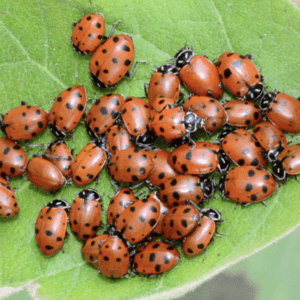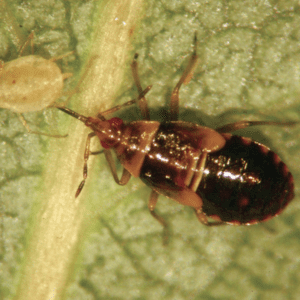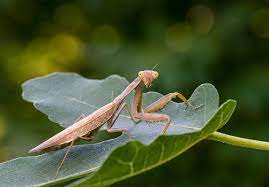Description
Green Lacewing Larvae
Ships Overnight Only. Orders ship on Tuesdays. Order by Wednesday for shipment Tuesday. Minimum 6-day processing time for this Biological Control beneficial predatory insect.
1,000 Green Lacewing larvae in a bottle This is an ideal Biological Control for aphids. And is commonly used as a generalist predator for tree and landscape insect control. Green Lacewings are predatory in the larval stage. So, they feed on a wide range of soft-bodied insects in various life stages. Green Lacewing larvae are preferred to Assassin Bugs and Minute Pirate Bugs in some growing environments because they are less likely to feed on other beneficial insect populations.
Green Lacewing larvae paralyze their prey with venom and feed on the body fluids of the pest. Each Green Lacewing larva will devour 200 or more pests or pest eggs per week during their two or three week developmental period. Green Lacewing adults can survive the winter in highly sheltered areas; however, most overwintering occurs as pupae or eggs.
Optimal Temperatures:
67-90°F, RH >30%
Preferred Food:
Aphids, Mealybugs, Spider Mites, Leafhopper Nymphs, Caterpillar Eggs, Immature & Soft Scale, Thrips, and Whiteflies.
For the best results, cultivate habitats that encourage adult lacewing to reproduce and remain in the release area. Nectar, pollen, and honeydew stimulate their reproductive process. If these food sources are not available, adults may disperse. Consider planting annual and perennial plants to provide pollen and nectar throughout the year.
Release Rates:
Release Green Lacewing larvae at a rate of 2 larvae per 20 pest insects, 2 larvae per square foot or 10,000-50,000 larvae per acre. Larvae should be released immediately upon receipt. Treat severe infestations using integrated pest management methods. It may be beneficial to use a knockdown spray prior to releasing beneficial insects in these cases.
This Product Controls These Pests or Diseases:
Alfalfa Weevil (Hypera postica Gyllenhal), Aphids (Mult), Armyworm (Pseudaletia unipuncta), Asparagus Beetles (Crioceris asparagi (common); Crioceris duodecimpunctata (spotted)), Bean Beetles – Mexican Bean Beetle (Epilachna varivestis Mulsant), Bean Thrips (Caliothrips fasciatus), Beet Armyworm (Spodoptera exigua (Hubner)), Beet Leafhopper (Circulifer tenellus), Black Scale (Saissetia oleae), Brown Almond Mite (Bryobia rubrioculus), California Laurel Aphid (Euthoracaphis umbellulariae), Caterpillar Eggs (Mult), Coconut Mealybug (Nipaecoccus nipae), Colorado Potato Beetle (Leptinotarsa decemlineata), Grape Leafhopper (Erythroneura elegantula), Greenhouse whitefly (Trialeurodes vaporariorum), Leafhopper (Circulifer tenellus), Leafhopper (Empoasca sp), Mealybug (Planococcus citri), Mealybug (Pseudococcus sp), Mexican Bean Beetle (Epilachna varivestis Mulsant), Mites (Tetranychus sp), Oleander Scale (Phenacaspis sp), Potato Leafhopper (Empoasca fabae), Potato Leafhopper; Bean Jassid (Empoasca fabae), Psyllids (Mult), Scale (Mult.), Silverleaf whitefly (Bemisia sp), Spider Mite (Mult), Sweet Potato Whitefly (Bemisia tabaci), Sweetpotato Whitefly (Bemisia sp), Thrips (Franklinothrips sp), Tobacco budworm (Heliothis virescens), Two-Spotted Spider Mite (Tetranychus urticae)
Additional information
| Weight | 2 lbs |
|---|---|
| Dimensions | 4 × 4 × 6 in |





